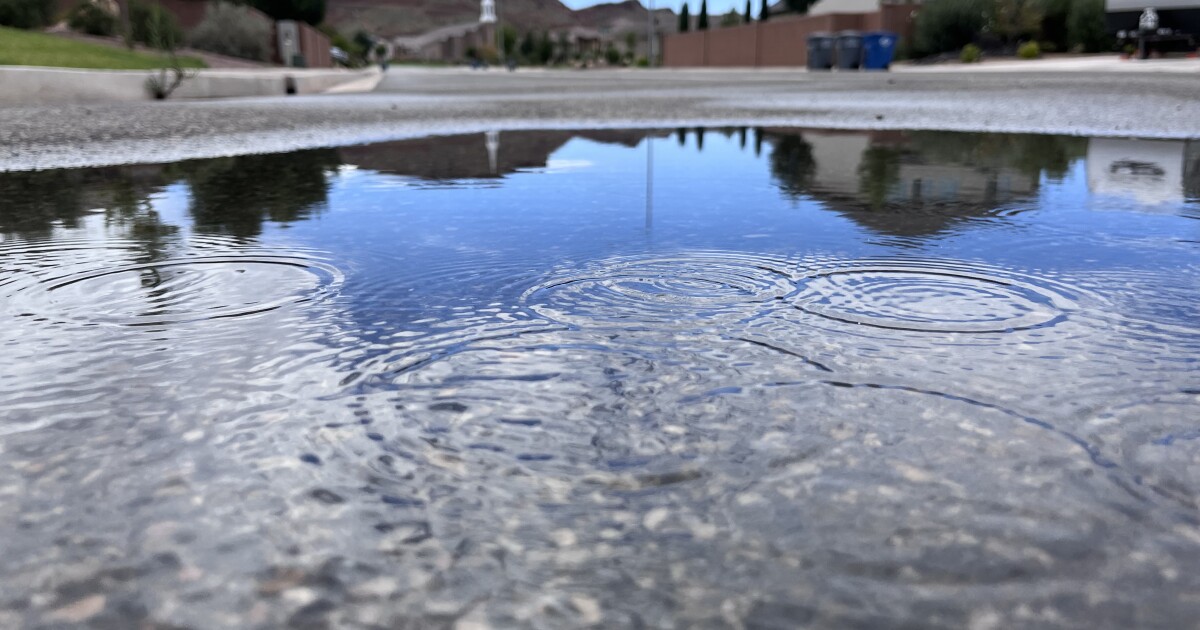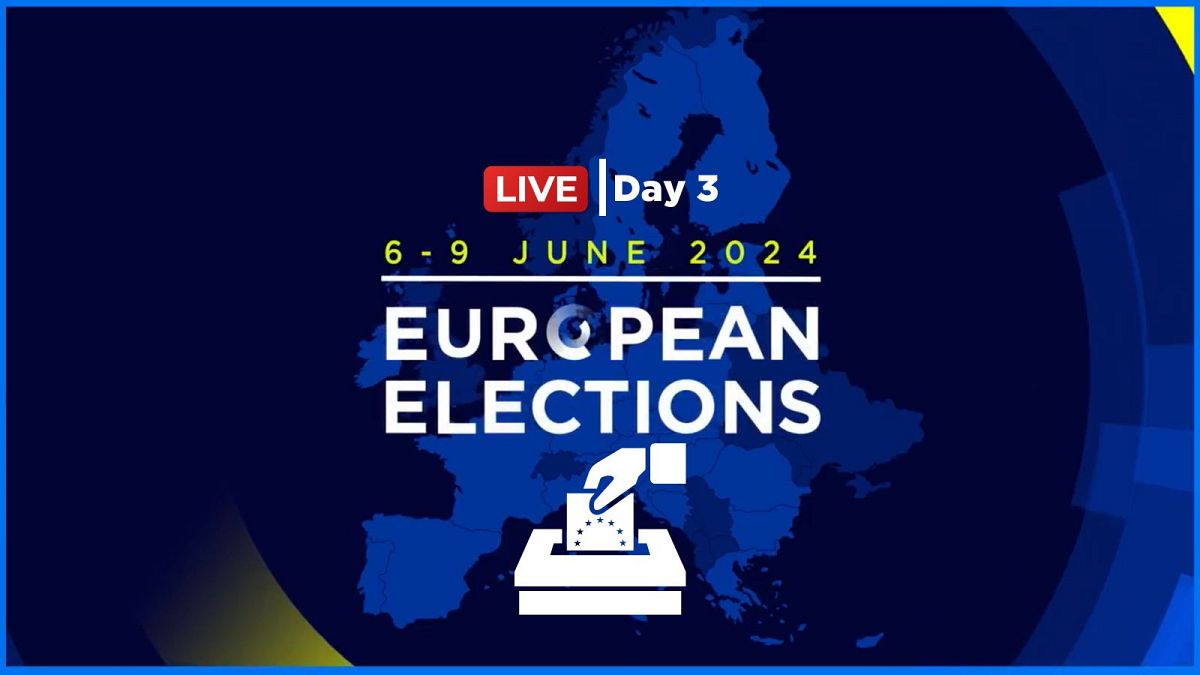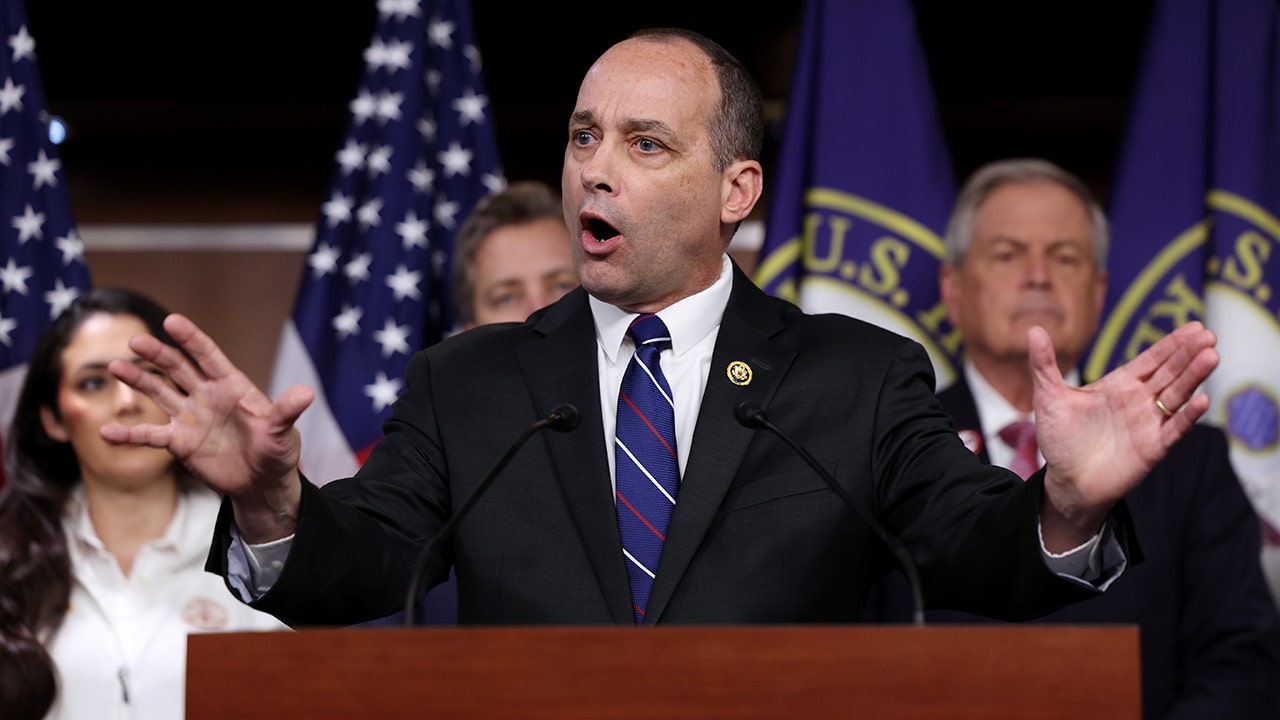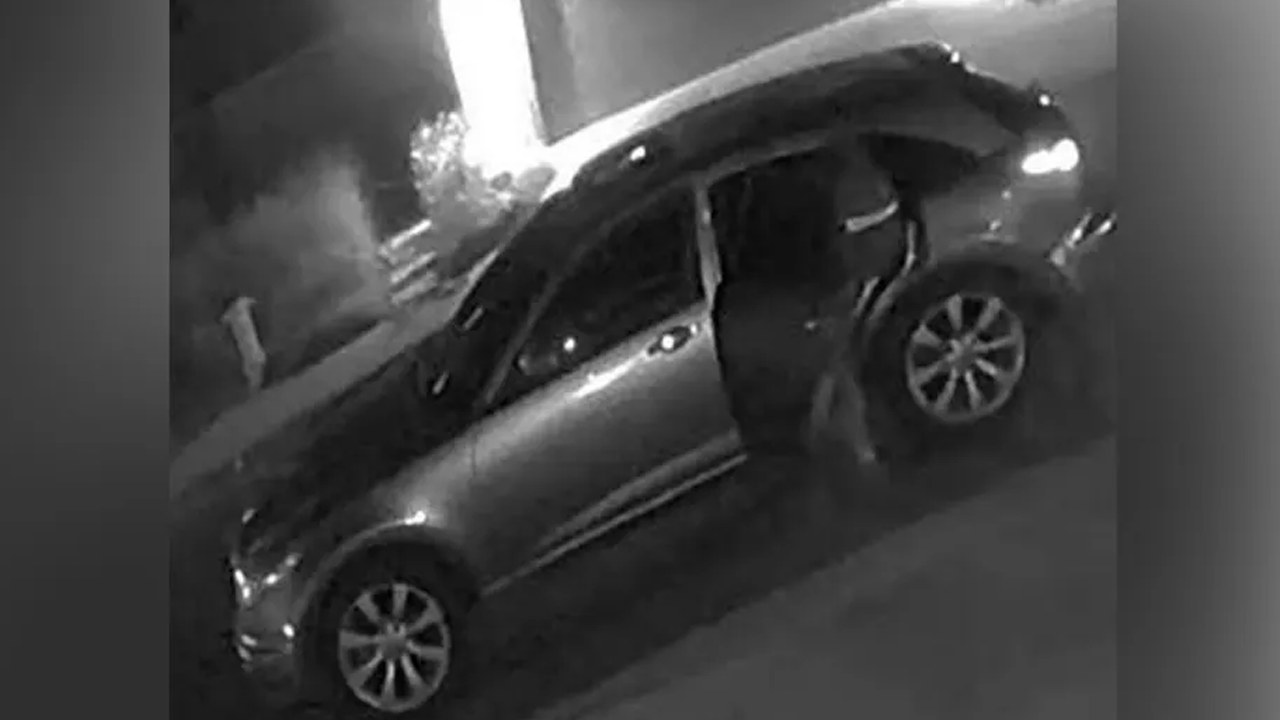Utah
Utah County holds fair to increase awareness of free breast cancer screenings

Estimated read time: 3-4
minutes
PROVO — A breast cancer awareness fair in Utah County on Tuesday and Wednesday is one way the county’s health department is trying to bring attention to its free cancer screening programs.
Laura Nelson said the main message they want to get to Utah County is to get mammograms.
Utah has one of the lowest rates of mammography screenings in the U.S., and Nelson said the health department is trying to increase that number — especially because mammograms are so readily available.
Nelson, who runs outreach efforts for the Utah County Health Department’s cancer screening program, said screenings are available year round, Monday through Friday, for breast cancer and cervical cancer — and it’s not just Utah County — screenings are available throughout the state through local health departments.
The screenings are available to anyone whose income is under 250% of the federal poverty level. Nelson said it doesn’t matter whether a person has insurance, because even with insurance, if a doctor needs to look more closely or order a biopsy, it might not be covered — but this program covers that, too.
“Even women with insurance can benefit from the program, which is really great,” she said.
Nelson also said after someone is diagnosed, the health department can help them get access to Medicaid or other insurance and can connect them with other resources, as well.
She said the department holds the fair twice a year, one in the spring and one in the fall, but this week’s services are focused on breast cancer awareness.
It brings attention to resources available for low-income residents, many of which, Nelson said, are available in Spanish. She said many of the nurses who provide the screenings speak Spanish, and some speak Portuguese.
Screenings are regularly available, or get screened on the spot for kidney disease, vision, glucose levels and blood pressure — as well as learn about community health and domestic violence resources.
“It’s really a community kind of just coming together to help however we can,” she said.
Nelson said women don’t need a referral from a doctor to receive a mammogram and they are typically covered by insurance. Women should begin getting yearly screenings for breast cancer at age 40, and should talk to a doctor about getting screened if they have concerns earlier than 40.
One of the booths at the fair was run by Pink Sync, a new Utah County organization started by a Lehi woman who was diagnosed with cancer and was not able to find the type of support she wanted locally.
Toni Allman, who was running the Pink Sync booth, talked about an event held earlier this month to connect breast cancer patients. She said 150 patients attended and multiple doctors spoke at the event — and the sessions were recorded for people who were not healthy enough to come.
She said when you’re diagnosed, there are a lot of questions that come quickly, and the event answered questions about hair loss and regrowth, cold capping, hormone therapy and other things.
Allman said 1 in 8 women will be diagnosed with breast cancer, and screenings are the best way to detect it quickly, which leads to easier treatment and better outcomes. She said her breast cancer was detected at stage zero, so her treatment didn’t include radiation or chemotherapy.
She encouraged women to get mammograms.
“Breast cancer shouldn’t be one of those things that scares you, because early detection is probably our best protection,” she said.
Photos
Related stories
Most recent Health stories
More stories you may be interested in

Utah
The forecasts for Utah’s monsoon season are in. And it’s not very good news

The outlook for this summer’s monsoon season shows Utah’s recent stretch of wetter-than-normal years may soon come to an end.
Below-average rainfall and above-average heat is in store between July and September, according to forecasts from the National Oceanic and Atmospheric Administration.
That’s bad news for water supplies, drought conditions and wildfire risk in an already dry state. But exactly where the worst localized impacts will be won’t be known until later in the summer, said Jon Meyer, assistant state climatologist with the Utah Climate Center.
“That will be a little bit touch-and-go as the season evolves into July and August. But at this point, overall, the region is expected to have an underperforming monsoon.”
Utah’s summer rainy season is also expected to show up late — likely two or three weeks behind its usual July onset. Early signs of monsoonal activity, he said, should already be forming in Mexico.
“They should be seeing afternoon thunderstorms across the mountains right now, and that really hasn’t materialized. So it’s behind getting out of the gate. … I think that is confirming our fears.”
The delay is largely due to lingering soil moisture from the past two wet years, which keeps the monsoon weather pattern from starting. The above-average heat Utah experienced this June may dry out the dirt a bit, he said, but likely not enough — or not quickly enough — to negate the effects of that moisture.
Last year’s summer rains were also delayed. But when they finally arrived, they brought enough moisture to turn things around in a hurry.
“I’m remaining optimistic that that might save our bacon this year with the delayed start expected again,” Meyer said. “But we have quite a few indicators right now suggesting that won’t happen.”
One of those indicators is the cycle of water temperatures in the Pacific Ocean, the phenomenon that creates El Niño and La Niña weather patterns.
Forecasts still expect that cycle to shift to La Niña in the months ahead — which could theoretically boost monsoon rains — but Meyer said that transition has been delayed, too. So La Niña will arrive too late to have much impact.
“It dragged its feet just enough. … So we’re missing out on that ingredient as well.”
With the outlook for La Niña and other global atmospheric patterns not as favorable as they were last year, he said it’s likely Utah will only see sporadic rainfall — rather than the steady storms of summer 2023.
National Oceanic And Atmospheric Administration
For Utah communities, this return to a drier cycle could have big impacts. For one, Meyer said it’ll likely allow drought to creep back in.
“We’ve seen some whispers of drought expansion in southern and eastern Utah thanks to their dry and warmer spring. So what we’re very much focused on right now is how our summer pattern will evolve and affect drought conditions.”
That’s a particularly worrying thought for the desert region around St. George, where water is already hard to come by.
“Monsoon rain for southwest Utah is actually very profound and has a huge effect upon our water supply,” said Washington County Water Conservancy District General Manager Zach Renstrom. “It’s something very critical that we count on.”
It’s vital, partly, because of its timing.
Monsoons typically hit southern Utah in July and August. Those months often have some of the hottest days of the year and ramped up demand for local water supplies — often for outdoor irrigation to keep grass and crops alive.
When it rains, people tend to turn off their sprinklers. To promote that mindset, he said the district offers a rebate on smart irrigation controllers, which use local weather data to help residents adjust their watering schedule.
“If we can save a gallon of water, we have the ability to save that water for multiple years. … So we always preach, ‘Hey, turn off your sprinklers.’”
Without the rain, however, pressure on local water supplies will inevitably rise. The area’s reservoirs are filled and ready to handle that demand this year, Renstrom said. That doesn’t mean there wouldn’t be lasting impacts.
As water storage gets drawn down from increased use, his thoughts turn to refilling it with future runoff from snowpack. But a poor monsoon season could hurt those chances, too.
That’s because soil that gets parched this year might soak up next year’s runoff before the water flows down to replenish reservoirs.
“It makes me actually very nervous about the following year,” Renstrom said.
“If we don’t get a good monsoon rain this year, not only does it affect this year, but it’ll actually affect the next summer. So it almost has a year-long effect.”
Utah
2025 three-star QB Shaker Reisig decommits from Utah

Shaker Reisig won’t be headed to Salt Lake City next year. The three-star quarterback from Tulsa, Okla. decided to decommit from the Utah, per an announcement on social media.
Reisig, who announced he would be joining the Utes back in February, was one of two QB’s on an eight-man class. He took an official visit to SLC over a week ago and came away feeling cold on his decision, according to sources.
Utah has four-star pro-style QB Wyatt Becker on the books for next year. The Pasadena prospect was named Mission League MVP before committing to Kyle Whittingham and the Utes. He threw for 2, 660 yards with 30 TDs and 7 INTs in 2023.
I have decommitted from the University of Utah. Thank you Coach Whittingham, Coach Ludwig, and the rest of the staff for the opportunity. @TomLoy247 @MohrRecruiting @MarshallRivals
— Shaker Reisig (@ShakerReisig) June 17, 2024
As for Reisig, he’s expected to land at Boston College, according to 247Sports. He’ll have a year to survey his options before making a hard commitment.
Becker’s growth will be important for the program, especially with Cameron Rising exiting the program after this season. He’ll likely be the next-in-line, but we’ll see if Whittingham sticks to that plan moving forward.
Utah will transition to the Big 12 later this year and is currently one of the favorites to win the conference. They’ll open the season against Southern Utah on Aug 29.
Utah
Utah Supreme Court agrees to hear teens' climate change lawsuit

SALT LAKE CITY — The Utah Supreme Court will hear a lawsuit brought by a group of teens challenging the state’s fossil fuel policies that they say harm their health and exacerbate climate change.
The state’s top court could revive a legal challenge that was dismissed in 2022 by a lower court judge. While he declared the teens “have a valid concern” about climate change and the impacts of the state’s fossil fuel policies, the judge dismissed their lawsuit, declaring that the issues fell within the realm of the legislative branch of government.
The teens appealed and the Court agreed to take up the case, setting arguments for Sept. 4. A notation in the docket indicates Associate Chief Justice John Pearce has recused himself from hearing the case. Prior to joining the Court, he was legal counsel for then-Governor Gary Herbert.
“We are hopeful that the Court will set this case back on the path towards trial, where it belongs. With each passing day that Utah’s statutory policy to maximize fossil fuel development remains in place, Utah’s government continues to increase the state’s dangerous air pollution and worsen the climate crisis, directly harming the health and safety of these brave young plaintiffs,” the teens’ attorney, Andrew Welle, said in a statement. “It is imperative that Utah’s courts hear this case so that these young people can secure their constitutional rights and prevent worsening harms to their health and safety.”
This year, the Utah State Legislature rewrote the state’s energy policies with some bills designed to prop up Utah’s declining coal industry. FOX 13 News first reported last year that Carbon County mined its last coal mine. On Wednesday, the legislature will meet in special session to consider a renegotiated bill that originally cleared the way for a state takeover of the massive Intermountain Power Project in central Utah. IPP has been moving away from fossil fuels.
-

 Movie Reviews1 week ago
Movie Reviews1 week ago‘Darkest Miriam’ Review: Britt Lower in a Marvel of a Drama About a Young Librarian’s Loves and Fears
-

 Politics1 week ago
Politics1 week agoGun group vows to 'defend' Trump's concealed carry license after conviction
-

 Politics1 week ago
Politics1 week agoShould Trump have confidence in his lawyers? Legal experts weigh in
-

 Politics1 week ago
Politics1 week agoGOP releases Jan. 6 clip of Pelosi saying 'I take responsibility' as she discussed National Guard absence
-

 News1 week ago
News1 week agoTrump to escalate blame on trial judge Juan Merchan if sentenced to prison
-

 World1 week ago
World1 week agoOrban party loses major support in Hungary's EU election
-

 World1 week ago
World1 week agoEU elections: Slovakia and Italy voting; Far-right surge expected
-

 World1 week ago
World1 week agoUkraine reconstruction official quits citing ‘systemic obstacles’


















